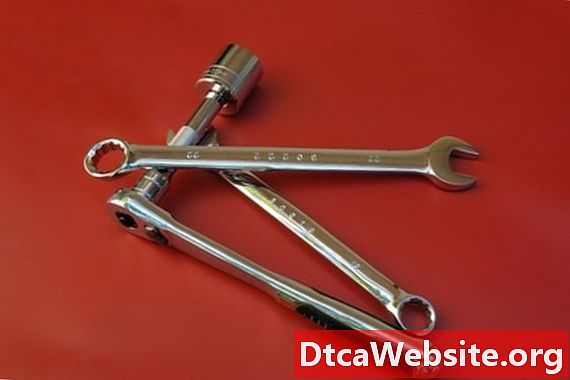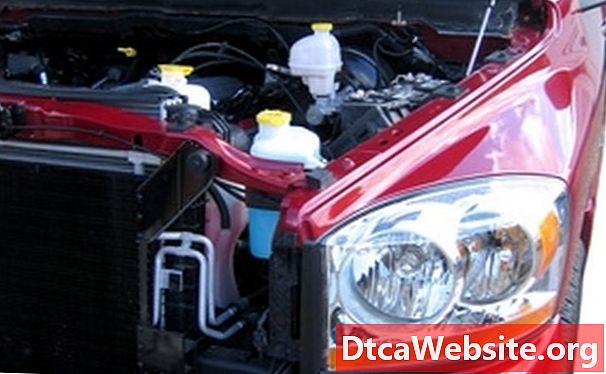
Contenu
- Step 1
- Step 2
- Step 3
- Step 4
- Step 5
- Step 6
- Step 7
- Step 8
- Step 9
- Step 10
- Step 11
- Step 12
- Step 13
- Step 14
- Step 15
- Tip
- Warning
- Items you will need

The Dodge Dakota is popular among pickup buyers who want more power and space than a compact provides but less than a full-size pickup offers. It makes a good choice for someone who wants to tow a light load such as a bass boat or an ATV. As such, a Dakotas transmission fluid will be subject to high heat and pressure, particularly when the Dakota is used for towing. Its enough to cause the additives in the fluid to break down and become less effective, requiring a transmission fluid change. Chrysler recommends that transmission fluid be replaced in a Dodge Dakota at 24,000 miles, then every 30,000 miles after that. With know-how and a quick trip to the auto parts store, a competent shade-tree mechanic can handle the job himself, saving money.
Step 1

Determine the Dakotas engine size and transmission. This provides the information to ensure you purchase the correct filter and gasket. Dodge Dakotas have several different engine and transmission configurations.
Step 2
Pull the truck onto vehicle ramps or jack the truck up high enough that you can get under it to drop the transmission fluid drain pan. Place jack stands under the truck pursuant to the instructions so that the truck cannot fall while the work is being done.
Step 3
Place a plastic bucket or catch pan on the ground under the transmission fluid pan.
Step 4
Remove all bolts except four, one on each side of the transmission pan. Loosen these four bolts about halfway. The transmission fluid will begin spilling into the pan. Drain as much fluid as possible.
Step 5
Remove two of the four remaining bolts. When these are out, place your hand up under the pan to support it and remove the last two bolts. There will be fluid remaining in the pan, so when the final two bolts are out, carefully pour the fluid into the plastic bucket or pan.
Step 6
Carefully wipe fluid from the bottom of the transmission and from the filter.
Step 7
Remove the filter using the appropriate screwdriver.
Step 8
Attach the new filter using the appropriate screwdriver.
Step 9
Dispose of old fluid and filter appropriately.
Step 10
Scrape all of the old gasket from the transmission fluid pan.
Step 11
Carefully place a new gasket on the cleaned fluid pan and place a bolt through to hold it in place.
Step 12
Replace the transmission fluid pan and screw all bolts in halfway, being careful not to damage the gasket.
Step 13
Screw bolts in the rest of the way, going in a back and forth pattern to ensure the pan is bolted down evenly. Check all bolts a final time to be sure they are all tight.
Step 14
Open the hood and remove the transmission fluid dipstick. Add 4 quarts of transmission fluid through dipstick tube. Continue adding fluid and checking the dipstick until fluid shows.
Step 15
Back the truck off the ramps or raise the truck up slightly to remove the axle stands and lower the truck to the ground. Shift the truck into reverse, then into park, several times, then check the fluid level with the engine running. Add fluid to bring the fluid to the appropriate level on the dipstick.
Check under the truck to be sure the fluid isnt leaking. If it is, tighten the transmission bolts further.
Tip
- Be sure you have the correct information on the engine and transmission so you get the correct filter. Use the fluid recommended by the manufacturer.
Warning
- Use caution when working under a vehicle and when checking fluid levels with the engine running.
Items you will need
- 5 to 7 quarts of transmission fluid
- Transmission fluid filter
- Gasket for transmission fluid pan
- Auto jack or ramps
- Jack stands
- Socket or wrench set
- Phillips or torque screwdriver (depending on model)
- Gasket sealer
- 8 quart plastic bucket or pan
- Shop rags


